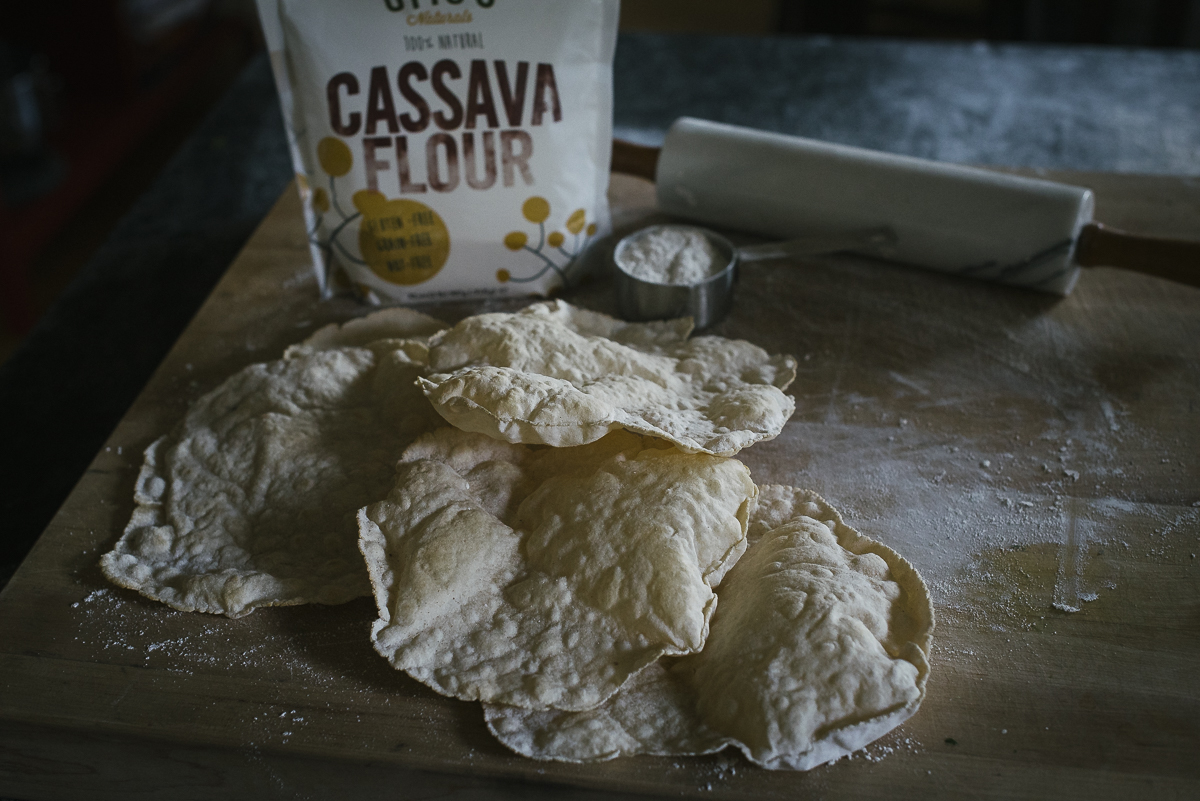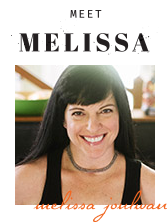You guys! I've had this post about my dad's visit to Vermont—and the subsequent Middle Eastern feast—in my drafts since November 3, 2015. That was...
Read MoreGrain-Free Pita Bread
A few days ago, I posted “lost” photos from an epic Middle Eastern feast my dad and I made together. And today, I’m sharing the recently unearthed recipe for the grain-free pita we used to scoop up our lamb and hummus at that delicious meal.
We based our recipe on this one from The New York Times, but replaced the whole wheat and all-purpose flour with Otto’s Cassava Flour. The resulting pita bread was tender, chewy, and beautifully puffed. It was the ideal scooping mechanism for the lamb, hummus, and Turkish Chopped Salad that were on the menu. Honestly, it would be delicious with any and all of my Middle Eastern recipes; you can find them all right here.
Grain-Free Pita Bread
Makes 8 pitas | Total time 2 hours
Ingredients:
2 cups lukewarm water
2 teaspoons active dry yeast
1 tablespoon honey
2 cups Otto’s Cassava Flour, plus extra for flouring the work surface
1 teaspoon salt
2 tablespoons extra-virgin olive oil
Directions:
Make a sponge. Place the lukewarm water in a large mixing bowl and sprinkle the yeast and sugar into the bowl; stir to dissolve. Add 1/4 cup flour and stir to combine, then place the bowl in a warm—but not hot—place, uncovered. Let the mixture sit until it’s frothy and bubbly, about 15 minutes.
Make the dough. Add the salt, olive oil, and 1 3/4 cup flour to the bowl. Use a wooden spoon to stir until the mixture starts to come together. It should form a sort of shaggy pile. Dust it will a little of the remaining cassava flour, then knead it in the bowl for 1 minute. Be sure to catch any little stray bits of dry dough.
Knead it. Turn the dough onto a floured work surface and knead it lightly until it’s smooth, about 2 minutes. Cover it with a towel and let it rest 10 minutes, then knead it again for 2 minutes. At this point, the dough should be soft and bit moist.
Let it rest. Clean the mixing bowl and return the dough to it. Cover the bowl tightly with plastic wrap, then cover that with a towel. Place the bowl in a warm—not hot—place and let it rest. Leave the dough until it has doubled in size, about 1 hour.
Prep the dough. Heat the oven to 475F. On the bottom shelf of the oven, place a heavy-duty baking sheet, large cast-iron pan or ceramic baking tile. Punch down the dough and divide it into 8 equal-sized pieces. Shape each piece into a little ball, place the dough balls on work surface, cover with a damp towel, and leave them alone for 10 minutes.
Shape the dough. Work with one ball at a time and keep the rest covered with the towel. Press the ball into a disc, sealing and smoothing and cracks that appear around the edges. Generously flour each side so the disc doesn’t stick to the work surface. Rolling from the middle outward, roll the disc until it’s half its original thickness. Seal any cracks or holes that appear. Roll the disc until it’s very thin—as thin as you can get it without tearing. The final circle should be about 8 inches in diameter.
Bake it. Being careful and very patient, gently loosen the disc from the work surface with a spatula/flipper and transfer it to the baking stone in the oven. Bake for about 2 minutes, then flip it with tongs and bake another 1-2 minutes. The pita should be pale and nicely puffed. Transfer finished pita to a towel-lined basket and cover so it stays soft. Repeat with remaining dough balls.
Still hungry? Try these
While we're on our Parisian adventure, Dave and I are feasting at Le 404, a swank and delicious Moroccan restaurant tucked in a cobblestone street. The...
Read More





Thanks for sharing the recipe! I was reading your last part like … Uh, where’s the link for the pita bread ?
Wow! I wasn’t at all sure that one could use the cassava flour with yeast, since others seem to report sketchy results. I’m excited by this possibility, and will definitely look forward to trying it.
THANK YOU for this recipe!!! I can’t wait to try it! We live near a large Middle-Eastern population in the US and LOVE the food, but have struggled with making paleo pitas/flatbread, so this is perfect! I was wondering, though, why is it necessary to cover the dough with plastic AND a towel? In all my baking I haven’t come across this before, and my nerdy side is nagging me about it.
Thanks also for the Greenola recipe, we’ll be trying that soon as well!
I have no idea—I am NOT a baker. We used the NYTimes recipe I linked to as our model, and those were the instructions in the recipe.
Do you have a recipe using this cassava flour that would make good simple roti or similar indian flatbread to eat with curry?
I don’t, but I found these via Google:
https://myheartbeets.com/paleo-naan-indian-bread/
https://www.primalpalate.com/paleo-recipe/grain-free-naan-bread-with-cassava-flour/
Hi, I have tried this recipe but it is way too wet. Could it be because I am a different type of cassava flour?
Without being in the kitchen with you while you’re cooking, there’s no way for me to know what might the issue might be. Next time, try reducing the water a bit or adding more flour.
I met your dad today when he delivered to a bakery where I work. We began talking and I mentioned that I don’t eat grains (too many people don’t know what paleo is) so anyway he told me about you and I can’t wait to check out your recipes. PS – he is so very proud of you.
Oh! This is so nice. Is it hard to work in a bakery and be paleo? My dad is the best—you are lucky you got to see him yesterday 🙂
Love cookn with cassava and this recipe will be a staple for me. I’m going to use it as my flour tortilla , pizza crust and as the crust for flammkuchen , one of Germany’s and Frances’s super dishes. Nice to hear from a cook that promotes clean eating this side of the pond. I’ll be back…
Hooray! Glad you found this recipe. Enjoy!